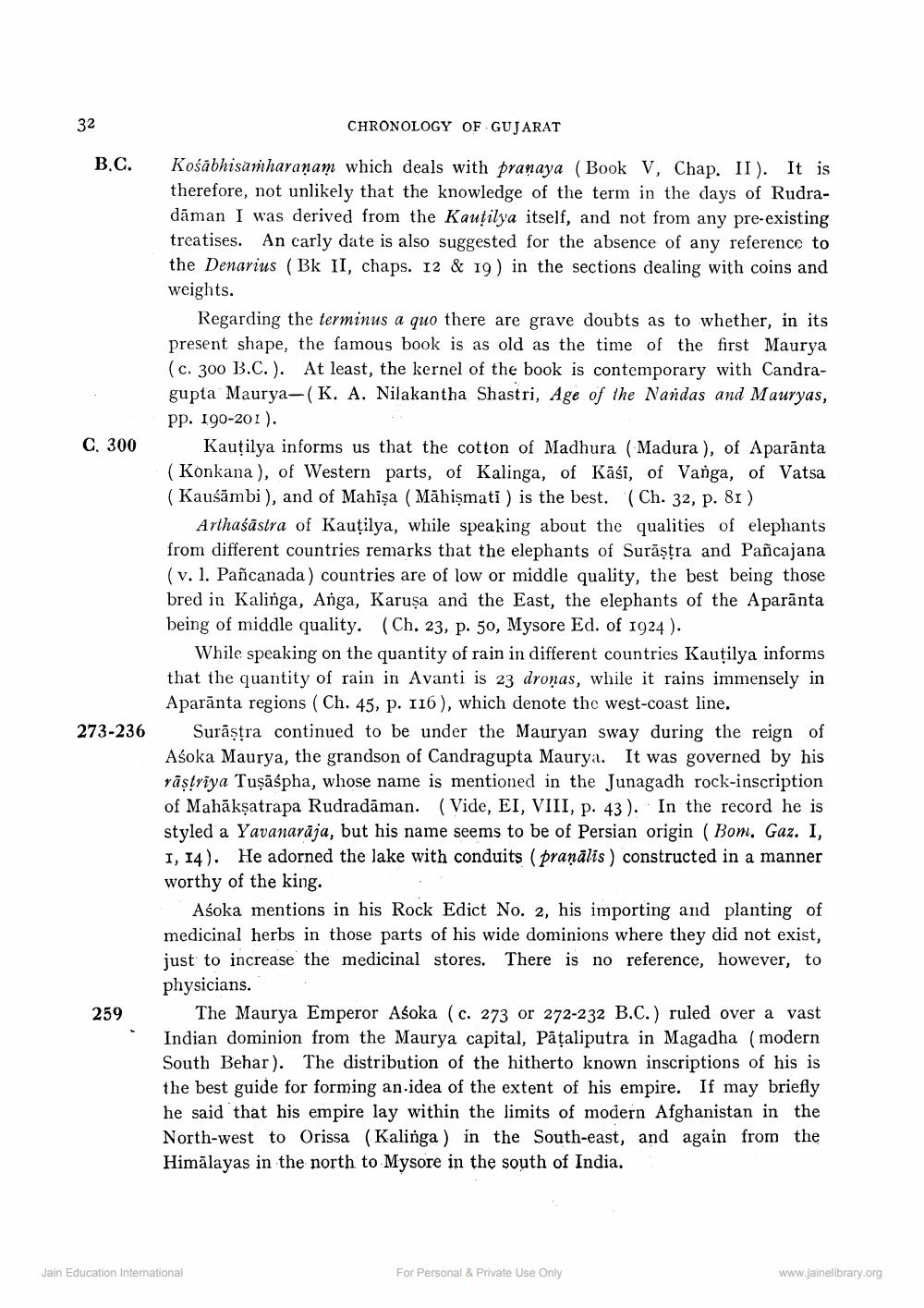________________
32
CHRONOLOGY OF GUJARAT
B.C.
C. 300
Kośābhisamharaṇam which deals with pranaya (Book V, Chap. II). It is therefore, not unlikely that the knowledge of the term in the days of Rudradāman I was derived from the Kautilya itself, and not from any pre-existing treatises. An carly date is also suggested for the absence of any reference to the Denarius (Bk II, chaps. 12 & 19) in the sections dealing with coins and weights.
Regarding the terminus a quo there are grave doubts as to whether, in its present shape, the famous book is as old as the time of the first Maurya (c. 300 B.C.). At least, the kernel of the book is contemporary with Candragupta Maurya-(K. A. Nilakantha Shastri, Age of the Nandas and Mauryas, pp. 190-201).
Kautilya informs us that the cotton of Madhura (Madura), of Aparānta (Konkana), of Western parts, of Kalinga, of Kāsi, of Vanga, of Vatsa (Kaušāmbi), and of Mahişa (Māhişmati ) is the best. (Ch. 32, p. 81 )
Arthaśāstra of Kautilya, while speaking about the qualities of elephants from different countries remarks that the elephants of Surāştra and Pancajana (v. 1. Pañcanada) countries are of low or middle quality, the best being those bred in Kalinga, Anga, Karusa and the East, the elephants of the Aparānta being of middle quality. (Ch. 23, p. 50, Mysore Ed. of 1924).
While speaking on the quantity of rain in different countries Kautilya informs that the quantity of rain in Avanti is 23 droņas, while it rains immensely in Aparānta regions (Ch. 45, p. 116), which denote the west-coast line.
Surāstra continued to be under the Mauryan sway during the reign of Asoka Maurya, the grandson of Candragupta Maurya. It was governed by his rastriya Tuşāśpha, whose name is mentioned in the Junagadh rock-inscription of Mahākṣatrapa Rudradāman. (Vide, EI, VIII, p. 43). In the record he is styled a Yavanarāja, but his name seems to be of Persian origin (Bom. Gaz. I, I, 14). He adorned the lake with conduits (praņālis) constructed in a manner worthy of the king.
Asoka mentions in his Rock Edict No. 2, his importing and planting of medicinal herbs in those parts of his wide dominions where they did not exist, just to increase the medicinal stores. There is no reference, however, to physicians.
The Maurya Emperor Asoka (c. 273 or 272-232 B.C.) ruled over a vast Indian dominion from the Maurya capital, Pāțaliputra in Magadha (modern South Behar). The distribution of the hitherto known inscriptions of his is the best guide for forming an idea of the extent of his empire. If may briefly he said that his empire lay within the limits of modern Afghanistan in the North-west to Orissa (Kalinga ) in the South-east, and again from the Himālayas in the north to Mysore in the south of India.
273-236
259
Jain Education Intemational
For Personal & Private Use Only
www.jainelibrary.org




